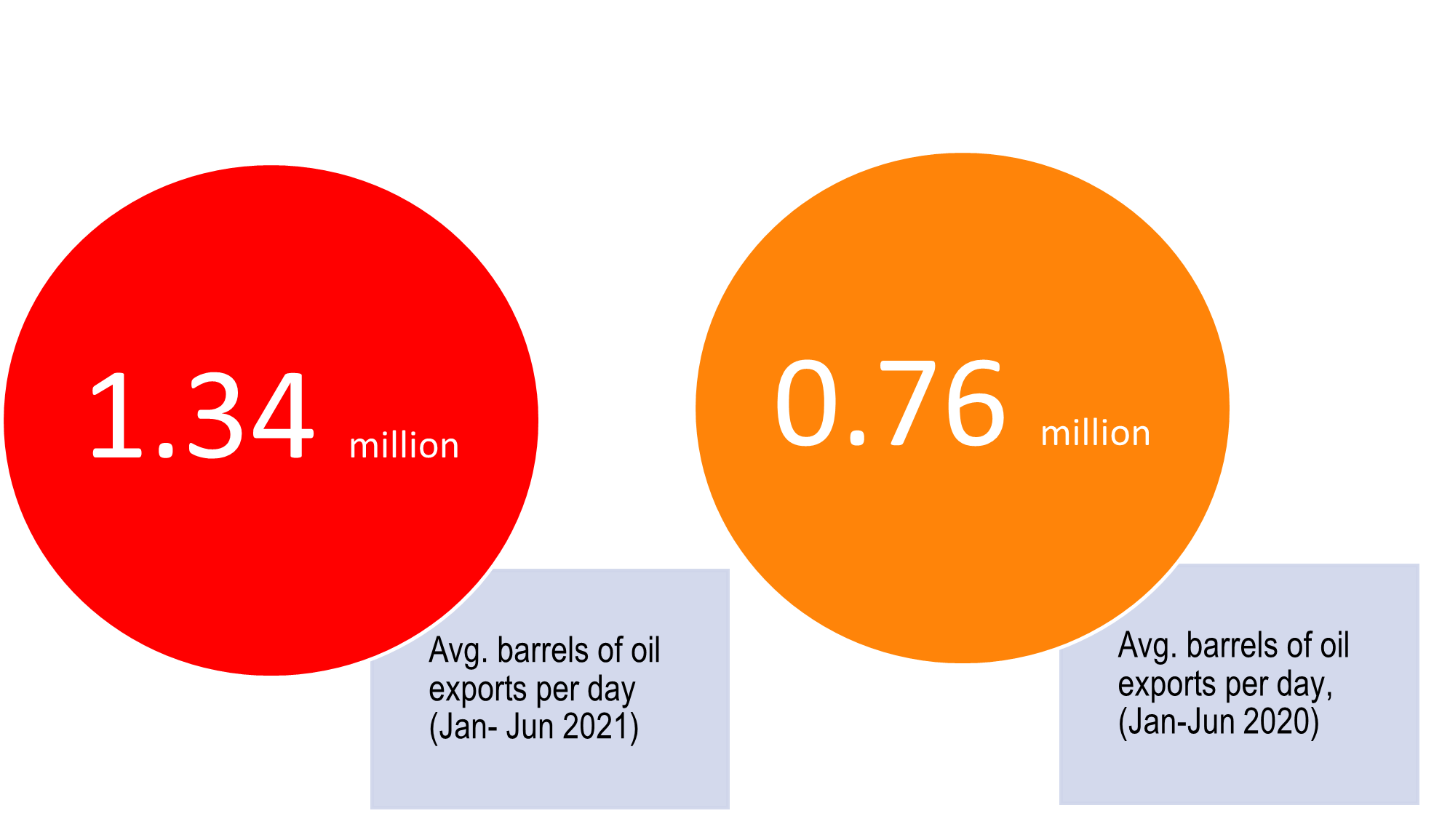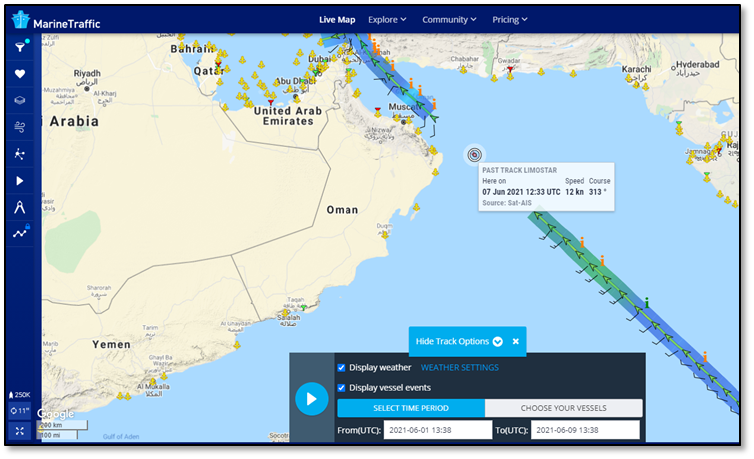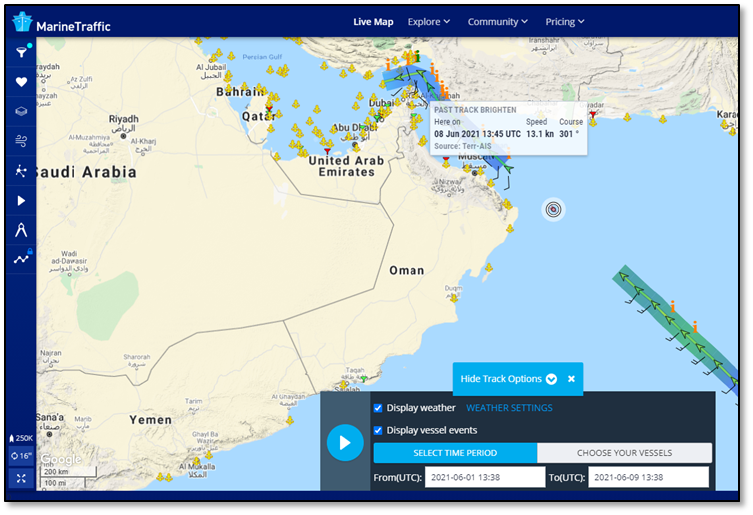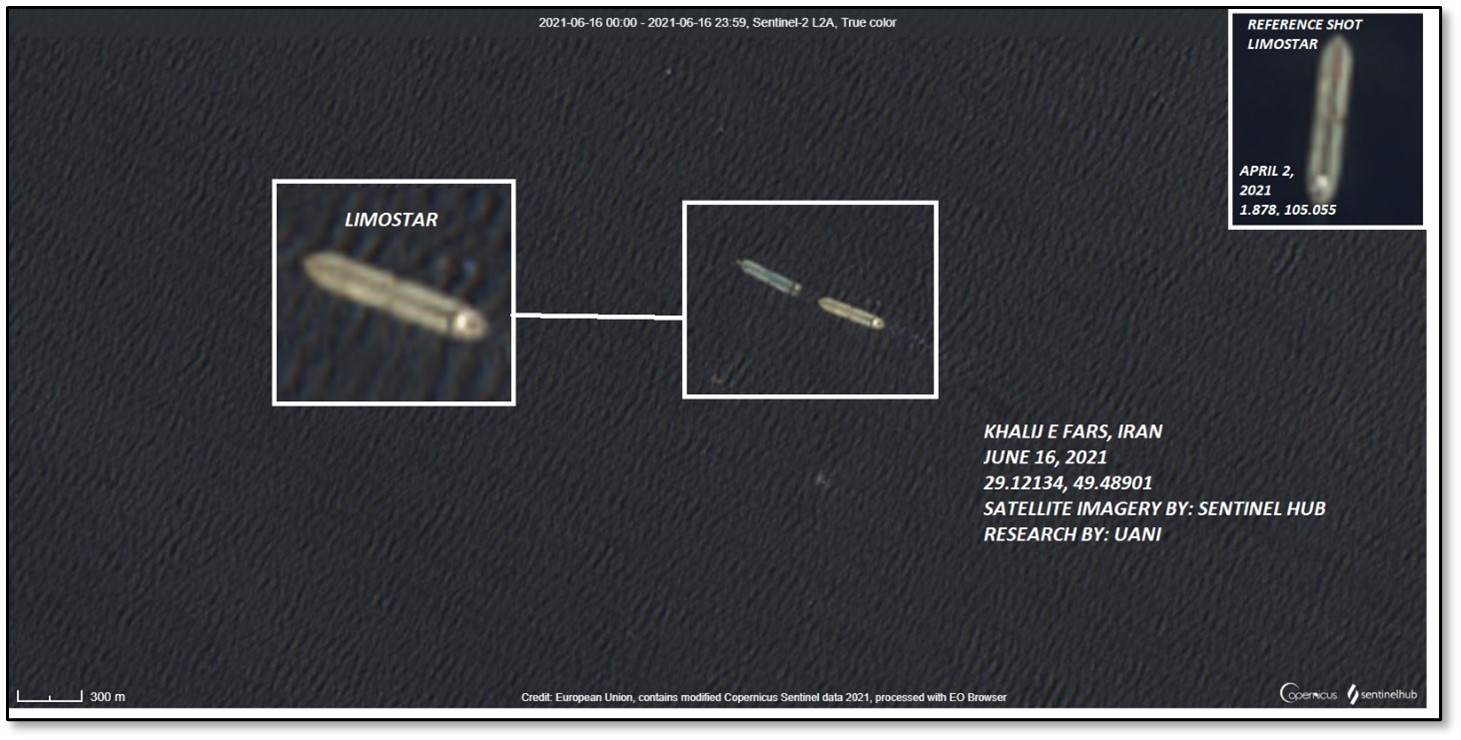June 2021 Iran Tanker Tracking
As part of our campaign to disrupt Tehran’s oil sales revenue, UANI has launched a new resource, the Iran Tanker Tracker. This comprehensively tracks exports of Iranian oil through our ship-tracking methodology dating back to April 2018. In addition to our monthly Iran Tanker Tracking Blogs, the new resource provides a comparison of where Iran’s oil exports were pre-JCPOA, during the JCPOA, and post-JCPOA.
In June 2021, world oil prices surged to almost $75 a barrel as major economies ease coronavirus restrictions and demand returns. The situation in Iran, which sits on the fourth-largest reserves of oil, is also having a significant impact on prices. The Iran nuclear talks are dragging beyond what many anticipated, while the recent installation of a conservative cleric, Ebrahim Raisi, as President has also thrown another wrench into the prospects for any lifting of U.S. sanctions on Tehran’s energy exports.
Yet despite the sanctions and ongoing talks in Vienna, Iran’s exports of crude oil and gas condensates climbed back up to over 1.1 million barrels per day (bpd) in June, up by a quarter-million barrels from last month’s 850,000 bpd figure.
As the second quarter passes, we can also compare the half-years of 2020 and 20201. For the first six months of 2021, Iran’s crude oil exports have averaged around 1.34 million bpd. This is almost double the average of the first six months of 2020, which UANI tracked at 760,000 bpd.

A major reason for this almost doubling is Iran’s addition of foreign-flagged tankers to its fleet. The co-option of additional foreign-flagged tankers grants a wider bandwidth for Iranian oil to traverse the globe and skirt sanctions, which the regime accrues revenues used to further its nuclear program and fund its terrorist activities.
Breaking June’s estimates down by country, UANI estimates Iran’s exports of crude oil and gas condensates at 1,152,881 bpd.
|
Country |
June 2021 - Barrels Per Day (bpd) |
May 2021 - Barrels Per Day (bpd) |
April 2021 - Barrels Per Day (bpd) |
|
China |
493,776 |
386,578 |
621,099 |
|
Syria |
88,508 |
87,010 |
55,118 |
| UAE |
48,907 |
22,000 |
22,733 |
|
Unknown |
521,690 |
351,613 |
569,924 |
|
Total |
1,152,881 |
847,200 |
1,268,874 |
In June 2021, Iran used 14 different foreign-flagged tankers for oil exports. These tankers either called directly at Iran’s Kharg Island and ‘spoofed’ fake locations while there or engaged in a ship-to-ship (STS) transfer with a vessel from Iran’s sanctioned National Iranian Tanker Company (NITC). Compared to the same month twelve months ago, Iran used only five different foreign-flagged tankers to export its oil in June 2020. This speaks to an inevitable correlation between an increase in the usage of foreign-flagged tankers with a corresponding rise in oil exports.
In June, Iran loaded gas condensates into the Iranian vessel FOREST (IMO: 9283760) and dispatched the condensates into the Soroosh oilfield. This is the first time in the history of Iran’s oil industry that it has injected gas condensate from the South Pars into the Soroosh oilfield. The Soroosh offshore oilfield is located west of Kharg Island and is comprised of an underwater network of pipelines that connect to a Floating Storage Unit (FSU) vessel called the Khalij e Fars (IMO: 9544114). The FSU collects heavy sour crude oil from the pipelines. However, by injecting gas condensates into the Soroosh oilfield, the viscosity of the oil is reduced. Iran considers this an advantage by adding flexibility to its oil industry.
One of the 14 foreign tankers that visited Iran in June was the crude oil tanker LIMOSTAR (IMO: 9237539). LIMOSTAR was the first foreign tanker to load from the FSU Khalij e Fars after the project was completed. However, as it approached the FSU, LIMOSTAR utilized a practice where it purports to be a decommissioned vessel, STAR BRIGHT (IMO: 9002594). Specifically, LIMOSTAR switched off its AIS transponder and switched on a second transponder in order to claim the MMSI of STAR BRIGHT, as shown in the two images below. UANI also confirmed the identity of the vessel with satellite imagery.


(Source: Marine Traffic)

(Source: Sentinel Hub)
As Iran increases its use of foreign-flagged tankers, UANI is increasing its outreach to maritime authorities, alerting them to the vessel’s involvement in the transport of Iranian oil. Disrupting Iran’s oil sales revenue is key to combating the numerous threats posed by the Islamic Republic of Iran.
Receive Iran News in Your Inbox.
Eye on Iran is a news summary from United Against Nuclear Iran (UANI), a section 501(c)(3) organization. Eye on Iran is available to subscribers on a daily basis or weekly basis.